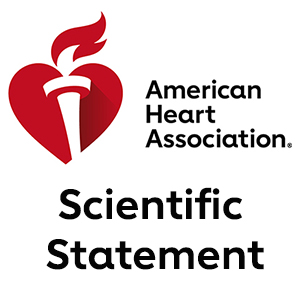For youth with a heart defect, shift to adult-focused care is key to health, quality of life
Statement Highlights:
- Most children born with heart defects, including those with complex heart conditions, now survive into adulthood. The transition to adult-centered health care, even if still in a pediatric setting, requires additional planning to ensure continuous care.
- Time without care during this transition can have a significant impact on long-term health and quality of life.
- The new scientific statement highlights potential barriers to successful health care transition and presents recent evidence on designing transition programs, while highlighting the need for patient-centered research.
Embargoed until 4 a.m. CT / 5 a.m. ET Thursday, March 17, 2022


An American Heart Association scientific statement is an expert analysis of current research and may inform future guidelines. The current statement is an update to the Association’s 2011 scientific statement and details the latest suggested best practices in managing the health care transition to adulthood for adolescents with congenital heart disease.
Congenital heart defects (CHD) are present at birth and involve abnormalities in the structure of the heart or blood vessels associated with the heart. These structural problems can usually be surgically repaired; however, the condition is not cured, and people with congenital heart disease – particularly those with complex heart problems – may require multiple operations and specialty heart care throughout their lives. According to the statement, as many as 1 in 5 individuals with congenital heart disease are currently adolescents or young adults (ages 13 to 25) who are entering the phase of their medical care that requires them to be more involved in making health care decisions.
“As physicians caring for adults with congenital heart disease, we see the consequences of patients who fall out of care and then return to care when they feel sick,” said Chair of the scientific statement writing group Anitha S. John, M.D., Ph.D., an associate professor of pediatrics at George Washington University and medical director of the Washington Adult Congenital Heart Program at Children’s National Hospital, both in Washington, D.C. “At that point, they have been without medical care for a period of time, and when they return to the health care system, they may have developed complications that could have been avoided had they remained in care.”
Health care transition is the process in which the individual gains independence with managing their own health care. Ideally, the process includes transfer of care to an adult-centered health care team. A smooth health care transition maximizes lifelong functioning while empowering individuals and their caregivers.
The statement updates three sections relevant to transitioning care as seamlessly as possible:
- Factors unique to vulnerable populations, including the contributions of social determinants of health (conditions affecting people’s lives and circumstances that influence health, such as race, ethnicity, education status, Medicaid or health insurance status, access to preventive care and the characteristics of the neighborhood in which they live), psychosocial well-being and neurocognitive status (mental and functional abilities) of the individuals with CHD.
- The additional costs and potential health complications of inadequate transition to adult care, as well as increased use of emergency medical services and the impact on quality of life.
- Considerations and suggestions for designing transition programs that address ways to increase adolescents’ participation in face-to-face and online communication with health professionals, adopting a family-centered approach and learning from successful program models.
The statement calls for clinicians to gain a broader understanding of transition needs and barriers to successful transition to minimize worsening health disparities for people with low socioeconomic status and those from historically under-resourced communities. Goals for successful transition include:
- improving adolescents’ and young adults’ knowledge about their heart condition;
- support in managing their care and advocating for their personal and medical needs;
- learning to navigate the health care system; and
- coordinating the integration into adult-centered care for both primary care and specialty care.
The statement also points to significant gaps in knowledge and calls for future research in several areas, including the ideal timing for transition and identifying barriers to successful transition (particularly among diverse racial and ethnic backgrounds).
“It is important to involve individuals and families in research,” John said. “Collaboration during this transition is critical to improving the lifelong care of people with congenital heart disease.”
This scientific statement was prepared by the volunteer writing group on behalf of the American Heart Association’s Adults With Congenital Heart Disease Committee of the Council on Lifelong Congenital Heart Disease and Heart Health in the Young and the Council on Clinical Cardiology; the Council on Cardiovascular and Stroke Nursing; the Council on Arteriosclerosis, Thrombosis, and Vascular Biology; and the Stroke Council. American Heart Association scientific statements promote greater awareness about cardiovascular diseases and stroke and help facilitate informed health care decisions. Scientific Statements outline what is currently known about a topic and what areas need additional research. While scientific statements inform the development of guidelines, they do not make treatment recommendations. American Heart Association guidelines provide the Association’s official clinical practice recommendations.
Co-authors are Vice Chair Michelle Gurvitz, M.D., M.S.; Jamie L. Jackson, Ph.D.; Philip Moons, Ph.D., R.N.; Karen Uzark, Ph.D., P.N.P.; Andrew S. Mackie, M.D., S.M.; Susan Timmons, B.A.; Keila N. Lopez, M.D., M.P.H.; and Adrienne H. Kovacs, Ph.D. Authors’ disclosures are listed in the manuscript.
The Association receives funding primarily from individuals. Foundations and corporations (including pharmaceutical, device manufacturers and other companies) also make donations and fund specific Association programs and events. The Association has strict policies to prevent these relationships from influencing the science content. Revenues from pharmaceutical and biotech companies, device manufacturers and health insurance providers and the Association’s overall financial information are available here.
Additional Resources:
About the American Heart Association
The American Heart Association is a relentless force for a world of longer, healthier lives. We are dedicated to ensuring equitable health in all communities. Through collaboration with numerous organizations, and powered by millions of volunteers, we fund innovative research, advocate for the public’s health and share lifesaving resources. The Dallas-based organization has been a leading source of health information for nearly a century. Connect with us on heart.org, Facebook, Twitter or by calling 1-800-AHA-USA1.
###
For Media Inquiries and AHA/ASA Expert Perspective: 214-706-1173
Michelle Kirkwood: Michelle.Kirkwood@heart.org
For Public Inquiries: 1-800-AHA-USA1 (242-8721)
heart.org and stroke.org



